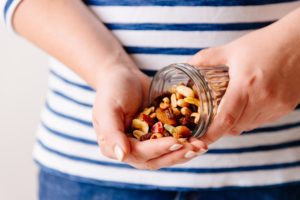 If you regularly notice you’ve got cold hands and feet, you’re likely experiencing circulation problems. And although the cold touch may appear to be nothing more than a minor annoyance, it could indicate a more significant problem.
If you regularly notice you’ve got cold hands and feet, you’re likely experiencing circulation problems. And although the cold touch may appear to be nothing more than a minor annoyance, it could indicate a more significant problem.
If nutrient-rich oxygenated blood isn’t reaching your hands and feet, it’s entirely plausible that it’s not reaching your brain and other vital organs either. This certainly doesn’t mean certain death, but over time, it can increase the risk for cognitive decline, dementia, Alzheimer’s, and more. To ensure optimal function of all your tissue and organs, nutrient-rich oxygenated blood must be delivered.
Advertisement
There are various things you can do to improve circulation like get more exercise, boost activity, manage stress, quit smoking, hydrate, and get a massage. But you can also passively improve circulation by getting adequate amounts of certain nutrients. Some of the nutrients that can help with circulation include:
Vitamin E: Vitamin E can help improve circulation by preventing blood clots. You can get more vitamin E in your diet cooking with wheat germ oil, olive oil, sunflower oil, or nut oils. Eating olives, almonds, sunflower seeds, peanuts, avocado, and spinach are also easily consumable, quick shots of vitamin E.
B-Vitamins: B-vitamins are primarily available in a host of fruits, vegetables, whole grains, and meat. Vitamin B3, also known as niacin, may strengthen blood vessels and boost blood flow. It can also help produce red blood cells that battle arterial stiffening. Good sources of niacin include Chicken breast, liver, tuna, turkey, salmon, anchovies, pork, and ground beef. If you’re vegetarian and concerned with circulation, a niacin supplement might be useful.
Iron: Iron plays a significant role in circulation because of its role in producing hemoglobin. Hemoglobin is oxygenated blood, and iron is absolutely necessary for it to form. Hemoglobin is delivered throughout the body to provide oxygen and nutrition to your organs and regulate thyroid hormone. Iron is found in large amounts in meat, but also in plant foods like lentils, chickpeas, beans, and other legumes, nuts, and seeds. Keep in mind that if you’re not eating meat, you’ll have to double recommended iron intake.
Optimizing circulation is central to health and wellness, and a holistic approach is required. Lifestyle modifications, like diet and exercise, may help assist other efforts to boost circulation.
